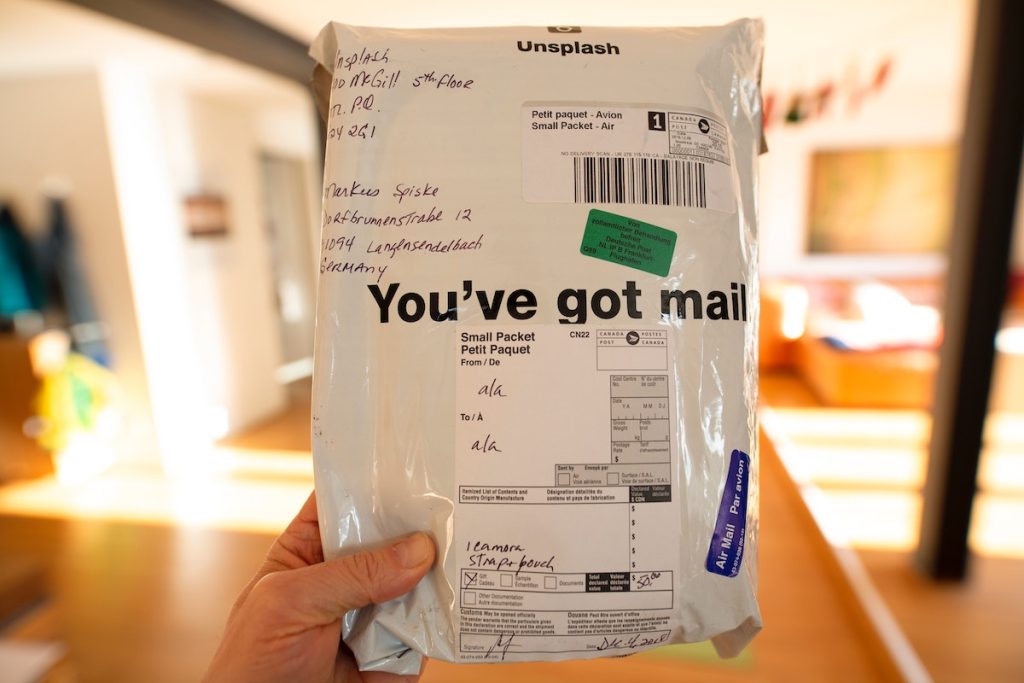To succeed in the retail sector, having a good product alone is not enough. The packaging matters, too.
Today’s entrepreneurs pay more attention to their package design, ensuring that the packaging complements the items. The rise in popularity of unboxing videos means you’ve got to mind how you package your goods; if you package it well, you’ll most likely star in the next viral unboxing video (aka free marketing).
There are many ways to package your products. Many businesses go down the “boxed package goods” route, packaging their products in boxes filled with special tissue and packing peanuts. But if this option isn’t for you, there’s another alternative: bags.
Instead of unboxing, aim for unbagging videos by going for eye-catching yet sturdy bagged package goods.
- What is a Bagged Package?
- What are the Different Types of Bagged Package Goods?
- Know Platforms To Buy Bagged Packages
- Why You Should Make the Switch to Packaging Bags
- Last Notes to Consider When Going Down the Bagged Package Products Route
- 10 Perks of Bagged Packaged Goods
- 1) Convenience and Ease of Use
- 2) Portability and Lightweight Design
- 3) Reduced Packaging Waste
- 4) Protection and Preservation of Product Freshness
- 5) A variety of Options and Choices are Available
- 6) Cost-effectiveness and Affordability
- 7) Accessibility and Availability in Different Markets
- 8) Customizable Portion Sizes for Individual Needs
- 9) Reusability and Potential for Storage after Opening
- 10) Compatibility with Different Types of Products
- Conclusion
- FAQ
What is a Bagged Package?
A bagged package refers to a packaging format where goods are enclosed or contained within a bag, typically made of materials such as plastic or paper. Bagged packaged goods offer a versatile and convenient way to store and transport various products. Plastic bags are commonly used for packaging items like snacks, produce, and household supplies, providing protection from moisture and preserving freshness. On the other hand, paper bags are often used for groceries, shopping, and packaging items that require a more environmentally friendly option.
The bagged packaging format allows for easy handling and portability and often features resealable closures to maintain product integrity. Whether it’s the familiar crinkle of a plastic snack bag or the sturdiness of a paper grocery bag, bagged packages are a common sight in our daily lives, offering practicality and functionality.
What are the Different Types of Bagged Package Goods?
If you choose to use bags for your products, you have different options:
- Polybags. Polybags (aka polyethylene bags) provide good protection to your products. They can be used for both perishable and non-perishable items. They are also recyclable!
- Foil bags. Another type of packaging bag is foil bags that are tightly sealed. These bags keep moisture outside of the bag, keeping your products (especially the food items) fresh and in good condition. Sealed foil bags are ideal for products like tea and coffee powder.
- Cotton bags. Bags made from breathable cotton are ideal for jewelry or textile products. Cotton bags keep your products safe and impress your customers (especially if you customize them). It can also be used for storing snacks, vegetables and grains. Since the bag is made from cotton, it is reusable; therefore, it is eco-friendly. The bags are also affordable so you won’t have to worry about your budget.
- Jute bags. Bags made of jute are the more affordable alternative to cotton bags. They offer the same level of protection and are very useful, especially if you offer textile products. They are also durable; you can print on them too. Like cotton bags, they are also recyclable.
Know Platforms To Buy Bagged Packages
Knowing the platforms to buy bagged packages is essential for convenient and reliable shopping experiences. Bagged packaged goods are widely available across various retail platforms. Supermarkets and grocery stores offer a wide range of bagged products, from snacks to produce. They provide the advantage of browsing physical aisles and comparing products firsthand.
Online marketplaces, such as e-commerce websites and mobile apps, also offer a vast selection of bagged packages, providing the convenience of shopping from the comfort of your home and often offering customer reviews and ratings. When purchasing boxed packaged goods, finding reputable sellers and trusted sources is important. Look for well-established brands or sellers with positive customer feedback.
Read product descriptions, reviews, and ratings to ensure the quality and authenticity of the bagged packages. Additionally, consider purchasing from authorized retailers or directly from the brand’s official website to guarantee the products’ integrity and quality.
Why You Should Make the Switch to Packaging Bags

When you invest in bags for packaging, you benefit from the following:
Protection for Your Products
With strong packaging like bags, you keep your products in good condition — which is important since damaged items compromise your business’ reputation with your customers. Most packaging bags are durable, especially if you pair it with other protective packaging materials like bubble wrap.
Easy to Carry Products
Bagged package goods are easy to carry. It will also save you time when it comes to shelves or shipping. Bags are often preferred by business owners who prefer easy handling during the shipment of their products.
Promotion for Products
If you want to increase sales, your product should stand out against your competitors. Customers will see your items on the shelves next to other products.
Investing in unique bag packaging products can improve your image because it is a part of your brand. From the design to the quality of the bag, these packaging materials can speak about the quality of your products.
Increased Perceived Value
High-quality packaging bags increase your product’s perceived value. Special print bags with your logo can also promote your brand. Customers are most likely to buy products packaged in eye-catching and high-end packaging.
Maintain the Integrity of the Packaging
Most of the time, buyers base their purchase products based on the packaging. Sturdy packaging bags add a layer of protection to your items, reducing the risk of damage.
Affordable Packaging Option
Packaging bags are more affordable compared to other packaging items like boxes. If you want to save more money, go for these reusable bags.
Apart from the low cost, these bags are also of good quality. They prevent oxygen from entering the bag, so if you’re selling perishable goods, that’s one less thing to worry about.
Last Notes to Consider When Going Down the Bagged Package Products Route
Packaging bags are ideal for sellers who are either on a budget or not big fans of bulky packaging (or both). They aren’t heavy, which makes them easier to carry. From a customer’s point of view, a business that makes it easy for them to carry their items is a business that cares.
You can also be creative with how you style or customize your bags. If you are on a budget, just adding your logo to the bag is enough. But if you want to go extra, hire a graphic designer or design your bags.
Boxes aren’t your only option when it comes to packaging your products. If you want something lightweight yet sturdy, go for high-quality bags.
10 Perks of Bagged Packaged Goods
Bagged packaged goods provide numerous perks, including convenience, portability, reduced waste, product protection, affordability, and customization options. They are versatile, accessible, and designed to maintain the freshness and quality of the contents. By opting for bagged packages, consumers can enjoy the benefits of practical and efficient packaging solutions that enhance their overall consumption experience. Here are the ten perks of bagged packaged goods in detail.
1) Convenience and Ease of Use
Bagged packaged goods offer a convenient and user-friendly packaging format. They are easy to open, seal, and handle, making them suitable for quick and hassle-free consumption. This makes bagged packages perfect for quick and on-the-go consumption, eliminating the need for complicated preparation or utensils.
2) Portability and Lightweight Design
Bagged packages are lightweight and compact, making them highly portable. They are ideal for on-the-go situations, travel, picnics, and packed lunches. The compact size and flexibility of bagged packages allow for efficient use of space, making them a great option for travel or when storage space is limited.
3) Reduced Packaging Waste
Bagged packages often use less material compared to other packaging formats, resulting in reduced waste. This is particularly evident with the use of flexible plastic bags, which can significantly reduce the amount of packaging material compared to rigid containers. Opting for bagged packages helps minimize environmental impact and supports sustainable packaging practices.
4) Protection and Preservation of Product Freshness
Bagged packages excel at preserving the freshness and quality of the contents. The materials used provide a barrier against moisture, air, and light, helping to maintain the flavor, texture, and nutritional value of the products. This ensures that you’re met with freshness and a satisfying sensory experience when you open a bagged package.
5) A variety of Options and Choices are Available
Boxed packaged goods come in a wide range of options, from snacks and cereals to frozen fruits and vegetables. Consumers have the freedom to choose from a diverse selection of products to suit their preferences and dietary needs.
6) Cost-effectiveness and Affordability
Bagged packages often offer cost-effective options compared to other packaging formats. Due to their streamlined design and efficient use of materials, bagged products can be priced more competitively, offering value for money without compromising on quality. They are frequently priced competitively, making them an affordable choice for consumers.
7) Accessibility and Availability in Different Markets
Bagged packaged goods are widely available in various retail settings, including supermarkets, convenience stores, and online marketplaces. From supermarkets and convenience stores to online marketplaces, bagged products can be found in various locations, ensuring easy access for consumers. This accessibility allows individuals to conveniently purchase their preferred bagged goods from their preferred shopping outlets.
8) Customizable Portion Sizes for Individual Needs
Bagged packages allow for portion control and customization. They are available in different sizes, catering to individual serving requirements and minimizing food waste. This is particularly beneficial for individuals who require specific portion control or have dietary restrictions. Whether you need a single serving or a larger family-sized portion, bagged packages offer flexibility in portion sizes to accommodate individual needs.
9) Reusability and Potential for Storage after Opening
Bagged packages can be resealed and used for future consumption. This feature enhances their versatility and allows for convenient storage of unused portions, reducing the need for additional storage containers. The resealability also helps to maintain freshness and extend the shelf life of the contents.
10) Compatibility with Different Types of Products
Bagged packages can accommodate various products, including dry goods, snacks, frozen foods, and even liquids. They offer flexibility in packaging various items, enhancing their versatility in the market.
Conclusion
The perks of boxed packaged goods are undeniable. They offer convenience, portability, reduced packaging waste, product freshness, and a variety of options to suit individual preferences. Bagged packages are cost-effective, accessible in different markets, and compatible with various product types. From snacks and cereals to frozen foods and liquids, there is a wide range of bagged goods available in the market.
So, don’t hesitate to explore the vast array of bagged packaged goods and discover the ones that align with your needs and preferences. Embrace the convenience and benefits they offer, while also contributing to sustainable packaging practices. With bagged packages, you can enjoy the ease and practicality of on-the-go consumption, making your daily routines more convenient and enjoyable.
FAQ
1) What types of products are typically sold in bagged packaging?
Bagged packaging is commonly used for products such as snacks, cereals, frozen fruits and vegetables, chips, pasta, rice, beans, and even pet food.
2) Are bagged packaged goods more cost-effective?
Bagged packaged goods often offer cost-effective options compared to other packaging formats. Due to their efficient use of materials, they can be priced more competitively, providing value for money without compromising quality.
3) Are bagged packaged goods environmentally friendly?
Bagged packaged goods can be environmentally friendly depending on the materials used and the disposal options available. Choosing bagged packages made from sustainable or recyclable materials and recycling them properly can contribute to environmental sustainability.
4) How long do bagged packaged goods typically last before they expire?
The shelf life of bagged packaged goods varies depending on the product. It is important to check the expiration date or “best before” date on the package to ensure the product’s freshness and quality. Typically, bagged goods can last from a few months to a year or more before they expire.
5) Can bagged packaged goods be recycled?
The recyclability of bagged packaged goods depends on the material used. Some plastic bags can be recycled at designated recycling centers or through store drop-off programs. However, it’s important to check local recycling guidelines and facilities to ensure proper recycling practices are followed. Additionally, bagged packages made of paper or other recyclable materials can often be recycled in standard recycling systems.



